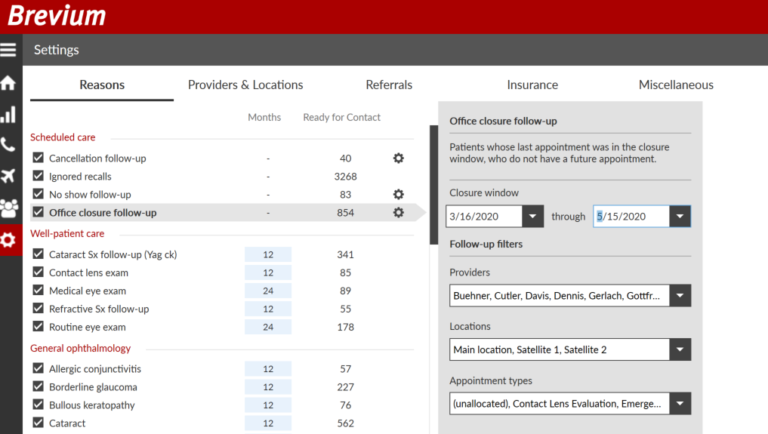The Brevium Blog

Build Your Patient Relationships on Trust
The most important relationship in your practice is between the doctor and the patient. And the foundation of that patient relationship is trust. The patient must trust their doctor to diagnose their conditions and provide the best possible care. The doctor must trust that the patient provides honest and complete explanations and is open to the doctor’s recommendations. Without trust, patients will change doctors.
Interpersonal trust is a belief that both people in the relationship will act in both party’s common interests. Trust is an emotion, where patients are comforted by their doctor’s caring attitude and thus willingly depend on the care giver’s intentions. [1] Patients’ trust in doctors is confidence that the doctor will act in their best interest. Trust includes communication, compassion, privacy and confidentiality, reliability, and competence. [2] According to research from George Washington University, patients say they trust doctors who listen to them, are compassionate, and who patiently explain everything the patient wants to know. [3]
Another study listed in the National Library of Medicine says, “Among the most commonly described dimensions of physician behavior on which patients are believed to base their trust are competence, compassion, privacy and confidentiality, reliability and dependability and communication.” So, building trust is a little different from person to person, but these will help give you a general idea.
Listen and Demonstrate Empathy
The way you engage with your patients carries the most impact on their level of trust in you. When you meet with a patient, you should close the door and eliminate all distractions. Listen carefully to what the patient says and summarize their concerns in your own words. This both ensures that you fully understand and lets the patient know you are following what they are saying. Trusted doctors also pay attention to nonverbal cues. For example, you should maintain eye contact, lean forward and avoid crossing your arms, which is a defensive move. It’s important to keep in mind that body language can subconsciously make people uneasy. So, it’s critical to pay close attention to your body language and maintain a calm demeanor. According to a Forbes article “5 Ways Body Language Impacts Leadership Results,” “First impressions are made in less than seven seconds and are heavily influenced by your body language. In fact, studies have found that nonverbal cues have over four times the impact on the impression you make than anything you say.” That’s a huge impact. So, don’t be overly nervous about your body language because people will sense that, too. However, just be mindful of it as a tool to help you gain patients’ trust.
You can follow the “background, affect, trouble, handling and empathy” (BATHE) model by asking patients what is going on in their life, how they feel about it, what troubles them the most and how they are handling the situation. Then express concern. The result of these efforts will be an all-important rapport.
Let The Patient Decide
Remember that patients are individuals who come to your practice to help improve their life in some way. They need to be involved in making decisions about their health based on your advice and recommendations. If multiple treatment options are available, your job should be to explain each option and its expected outcomes. Then let the patient decide which option is right for them. Wait for them to ask for your opinion, or if you want to share your opinion, perhaps let them think about the situation for a few minutes before giving your insights. Your thoughts are very valuable, but sometimes people need a little time to process what’s happening before they can clear their minds to make a choice. This will make you seem compassionate and patient, which will help your patients feel more comfortable.
Demonstrate Your Competence
Patients need to trust that their doctor is competent in all areas they will be giving advice. This is the hardest area to communicate to patients, but you can build trust in your competence without coming across as bragging or disingenuous. Don’t be afraid to hang your framed medical licenses in exam rooms. When you consult with patients, refer to recent studies related to their condition, which shows you are up to date on breaking research and changing procedures. Carefully listening and showing that you fully understand your patient’s situation and then providing relevant advice goes a long way in assuring patients that you are competent to treat them.
Five Quick Tips for Developing Trust
- Trust takes time. The first impression is important, but your patients learn to trust you over time. Be consistent in your patient doctor relationship, recommendations and communications.
- Respect your patients. Treat them as intelligent people who are capable of understanding their situation and your recommendations.
- Take time to think. Listen to your patients, carefully consider options and deliver your opinions with confidence.
- Avoid self-promotion. Demonstrating your competence is important, but expressing your accomplishments can be perceived as disingenuous. Your actions are better proof than anything you can say.
- Explain your thought process. Your patient needs to understand the why behind your recommendations, and understanding how you came to those will help them trust your judgment.
Brevium is the pioneer in patient reactivation. Brevium’s software mines clients’ patient databases using customized algorithms to find lost patients. Brevium then uses communications strategies that are based on original research to help ensure that patients return for the care they need, and practices derive the greatest financial benefit from the patient appointment lifecycle™. Hundreds of practices have found Brevium to be a trusted partner, with personalized training and unlimited support.














